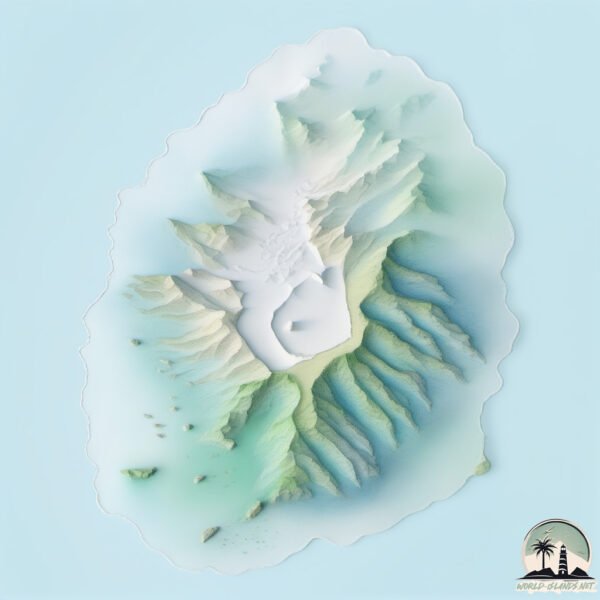Karkar

Welcome to Karkar, a Tropical island in the Bismarck Sea, part of the majestic Pacific Ocean. This guide offers a comprehensive overview of what makes Karkar unique – from its geography and climate to its population, infrastructure, and beyond. Dive into the details:
- Geography and Size: Explore the island’s size and location.
- Climate and Weather: Weather patterns and temperature.
- Topography and Nature: Uncover the natural wonders of the island.
- Infrastructure and Travelling: Insights on reaching, staying, and making the most of your visit.
- News and Headlines: Latest News.
Geography and size of Karkar
Size: 400.5 km²
Coastline: 85.8 km
Ocean: Pacific Ocean
Sea: Bismarck Sea
Continent: Oceania
Karkar is a Large Island spanning 400 km² with a coastline of 86 km.
Archipel: Melanesia – A subregion of Oceania in the southwestern Pacific Ocean, including countries like Fiji, Solomon Islands, and Vanuatu, known for their diverse cultures and languages.
Tectonic Plate: South Bismarck – Located north of New Guinea and east of the North Bismarck Plate, involved in complex interactions with the Pacific Plate, contributing to the region’s seismicity.
The geographic heart of the island is pinpointed at these coordinates:
Latitude: -4.6438376 / Longitude: 145.97399175
Climate and weather of Karkar
Climate Zone: Tropical
Climate Details: Tropical Rainforest Climate
Temperature: Hot
Climate Characteristics: This climate is typified by heavy rainfall throughout the year, high humidity, and consistently high temperatures, leading to lush rainforests and rich biodiversity. Seasonal temperature variations are minimal.
Topography and nature of Karkar
Timezone: UTC+10:00
Timezone places: Australia/Sydney
Max. Elevation: 1833 m Mt. Kunugui
Mean Elevation: 397 m
Vegetation: Evergreen Broadleaf Forest
Tree Coverage: 77%
The mean elevation is 397 m. Dominating the island’s landscape, the majestic “Mt. Kunugui” rises as the highest peak, soaring to impressive heights. The island is characterized by Mountains: High, steeply elevated landforms. Characterized by both a high maximum elevation (over 500 meters) and a high mean elevation, creating rugged, mountainous terrains on islands.
Dominating Vegetation: Evergreen Broadleaf Forest
Characterized by dense, lush canopies of broadleaf trees that retain their leaves year-round. These forests are typically found in tropical and subtropical regions and are known for their high biodiversity. Karkar has a tree cover of 77 %.
Vegetation: 8 vegetation zones – Very Highly Diverse Island
Islands in this range are ecological powerhouses, showcasing a wide array of vegetation zones. Each zone, from lush rainforests to arid scrublands, coastal mangroves to mountainous regions, contributes to a complex and interdependent ecosystem. These islands are often hotspots of biodiversity, supporting numerous species and intricate ecological processes.
Infrastructure and Travelling to Karkar
Does the island have a public airport? no.
There is no public and scheduled airport on Karkar. The nearest airport is Madang Airport, located 53 km away.
Does the island have a major port? no.
There are no major ports on Karkar. The closest major port is MADANG, approximately 53 km away.
The mean population of Karkar is 52 per km². Karkar is Gently Populated. The island belongs to Papua New Guinea.
The name of the island resonates across different cultures and languages. Here is how it is known around the world: Arabic: كركر; German: Karkar; Spanish: Karkar; French: Dchar Karkar; Portuguese: Karkar; Russian: остров Какркар; Chinese: 卡尔卡尔岛
Continuing your journey, Bagabag is the next notable island, situated merely km away.
Karkar Island



Papua New Guinea is classified as Developing region: Regions characterized by lower income levels, with economies in the process of industrialization and modernization. The level of income is Lower middle income.
News – Latest Updates and Headlines from Karkar
Stay informed with the most recent news and important headlines from Karkar. Here’s a roundup of the latest developments.
Please note: The data used here has been primarily extracted from satellite readings. Deviations from exact values may occur, particularly regarding the height of elevations and population density. Land area and coastline measurements refer to average values at mean high tide.
